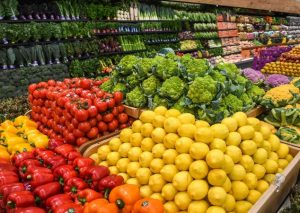Chemical reactions are the fundamental processes that drive the transformations of matter in our universe. Understanding the different types of chemical reactions is crucial for scientists and students alike. In this blog post, we will delve into the intricacies of the 11 types of chemical reactions, exploring their mechanisms, applications, and real-world examples. So, let's embark on this enlightening journey through the fascinating world of chemical reactions.
- Combination Reactions:
Combination reactions involve the merging of two or more substances to form a single compound. We will explore the various subtypes of combination reactions, such as metal and non-metal reactions, metal oxide reactions, and more. Additionally, we will discuss the significance of combination reactions in industries like pharmaceuticals and materials science. - Decomposition Reactions:
Decomposition reactions are the opposite of combination reactions, where a single compound breaks down into two or more simpler substances. We will examine thermal decomposition, electrolytic decomposition, and other decomposition processes. Furthermore, we will highlight the importance of decomposition reactions in fields like environmental science and waste management. - Displacement Reactions:
Displacement reactions involve the replacement of an element in a compound by another element. We will explore different types of displacement reactions, including single displacement and double displacement reactions. Real-world examples, such as the reaction between metals and acids, will be discussed to illustrate the practical applications of displacement reactions. - Redox Reactions:
Redox reactions, also known as oxidation-reduction reactions, involve the transfer of electrons between reactants. We will delve into the concepts of oxidation and reduction, explaining how to identify them in a chemical equation. Moreover, we will explore the diverse applications of redox reactions, ranging from energy production to corrosion prevention. - Acid-Base Reactions:
Acid-base reactions occur when an acid reacts with a base, resulting in the formation of water and a salt. We will discuss the different types of acid-base reactions, including neutralization reactions and acid-base titrations. Additionally, we will explore the significance of acid-base reactions in various fields, such as medicine and agriculture. - Precipitation Reactions:
Precipitation reactions involve the formation of an insoluble solid (precipitate) when two aqueous solutions are mixed. We will explore the factors influencing precipitation reactions, such as solubility rules and the common ion effect. Furthermore, we will examine the applications of precipitation reactions in environmental analysis and wastewater treatment. - Combustion Reactions:
Combustion reactions involve the rapid reaction of a substance with oxygen, resulting in the release of heat and light. We will discuss the different types of combustion reactions, including complete and incomplete combustion. Real-life examples, such as the combustion of fossil fuels and the process of respiration, will be explored to highlight the significance of combustion reactions. - Photochemical Reactions:
Photochemical reactions are triggered by light energy, leading to the formation of new compounds. We will delve into the mechanisms of photochemical reactions, including the role of excited states and photoreceptors. Moreover, we will explore the applications of photochemical reactions in fields like photography, solar energy, and environmental remediation. - Nuclear Reactions:
Nuclear reactions involve changes in the atomic nucleus, resulting in the release of vast amounts of energy. We will explore different types of nuclear reactions, such as fission and fusion reactions. The applications of nuclear reactions in power generation and medical imaging will be discussed, along with the associated benefits and risks. - Polymerization Reactions:
Polymerization reactions involve the combination of monomers to form polymers, which are large, chain-like molecules. We will discuss the various types of polymerization reactions, including addition and condensation polymerization. The applications of polymers in industries like plastics, textiles, and medicine will be explored, showcasing the significance of polymerization reactions. - Precursor Reactions:
Precursor reactions involve the formation of intermediate compounds that subsequently undergo further transformations. We will explore the role of precursor reactions in complex chemical processes, such as the synthesis of pharmaceutical drugs and the production of advanced materials. Real-world examples will be provided to illustrate the importance of precursor reactions.
Conclusion:
Chemical reactions are the building blocks of our world, driving countless natural and synthetic processes. Understanding the 11 types of chemical reactions is essential for scientists, students, and anyone curious about the world around us. By exploring the mechanisms, applications, and real-world examples of these reactions, we have gained a deeper appreciation for their significance in various industries and scientific endeavors.




+ There are no comments
Add yours